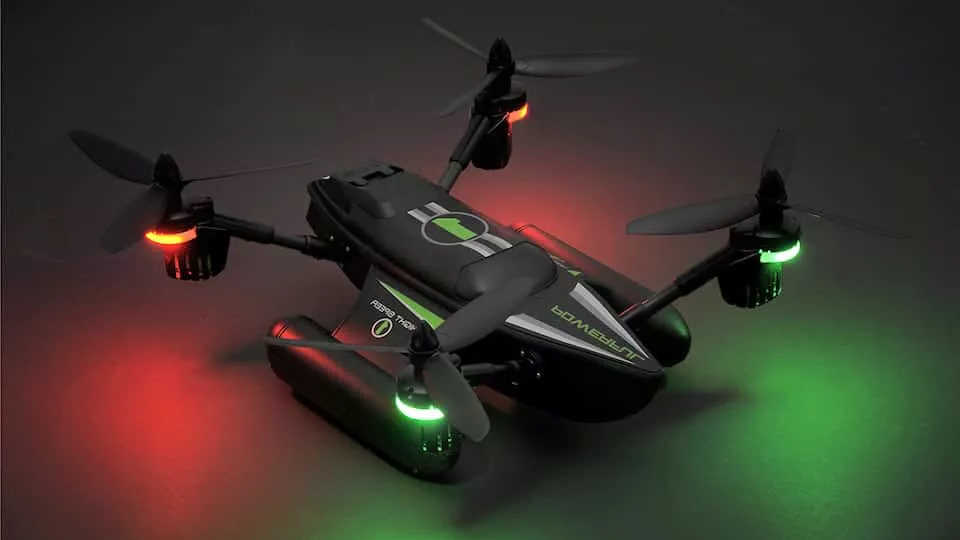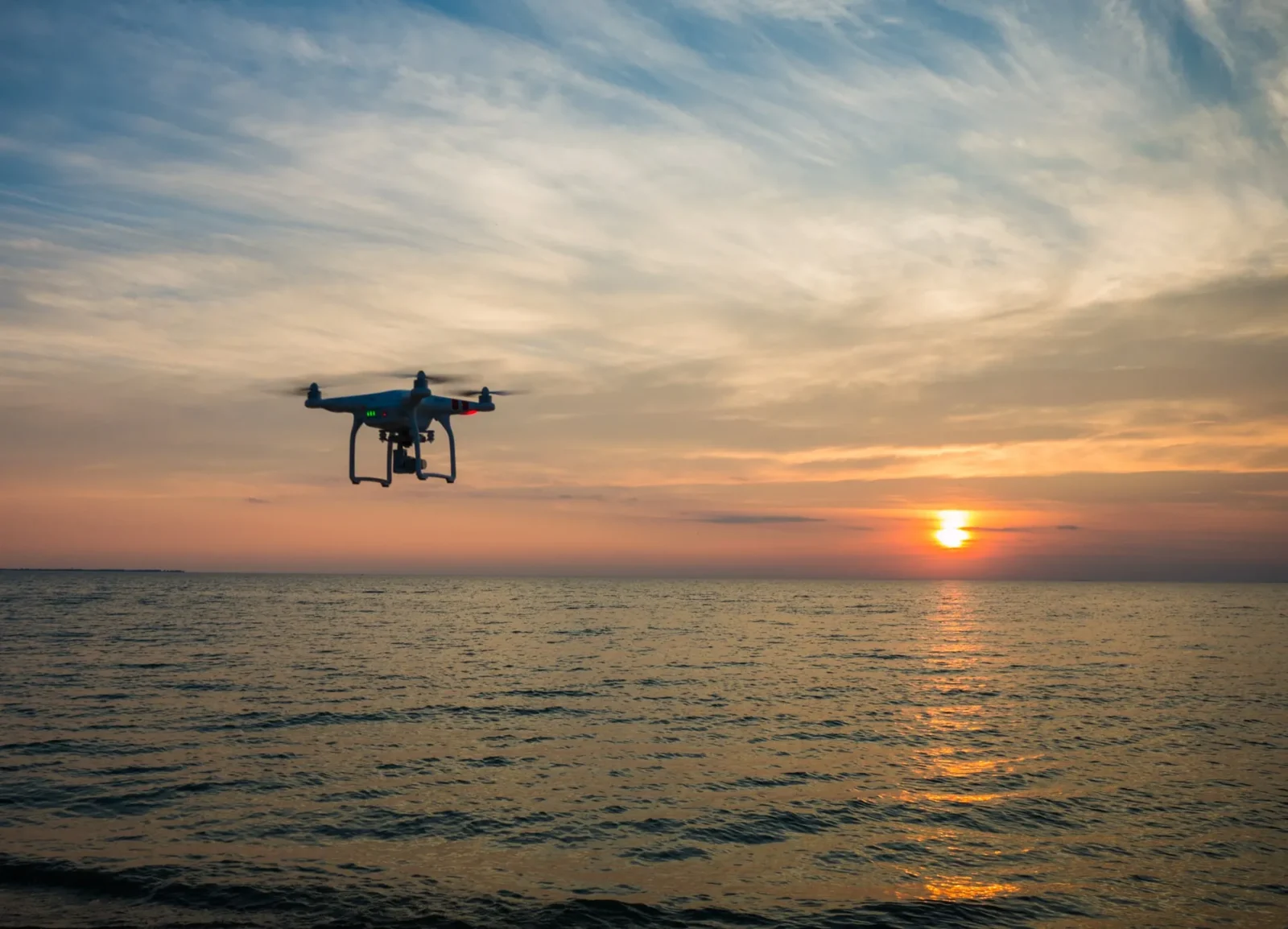In the vast world of drones, quadcopters have taken flight and captured the imagination of enthusiasts worldwide. With their nimble maneuverability and aerial capabilities, these flying marvels have become a staple in photography, videography, and recreational activities. But amidst the excitement, one feature stands out: headless mode. This intriguing function has piqued the curiosity of drone pilots, both seasoned and new.
In this article, we will unlock the secrets of quadcopter headless mode, exploring its functionality and advantages. So fasten your seatbelts and prepare to soar through the skies as we delve into the fascinating world of headless mode, brought to you by DroidMen, your go-to source for all things drone-related.
Understanding the Basics of Quadcopter Flight

Source: adorama.com
Quadcopters, with their sleek design and four propellers, have revolutionized the way we explore the skies. Before taking flight, it’s essential to understand the fundamental components and flight controls that govern these airborne wonders. From the propellers that provide lift and thrust to the motors that power them, each component plays a crucial role in achieving stable flight.
Furthermore, mastering flight controls such as throttle, yaw, pitch, and roll enables pilots to maneuver with precision and grace. Additionally, flight modes offer a range of functionalities, from stability assistance to acrobatic maneuvers, allowing pilots to adapt their quadcopter’s behavior to different scenarios.
By gaining a solid foundation in quadcopter flight basics, enthusiasts can unlock the full potential of these aerial machines and embark on exhilarating airborne adventures. So, strap in and get ready to soar as we explore the dynamic world of quadcopter flight.
Exploring Headless Mode
Headless mode, a captivating feature of quadcopters, redefines the frame of reference for the drone by aligning its orientation with the pilot’s perspective. This simplifies control inputs, especially for beginners, as moving the control stick forward always makes the drone move away from the pilot, regardless of its actual position. This eliminates the confusion of orientation and allows pilots to focus on maneuvering without added complexity.
The advantages of the headless mode are manifold. For beginners, it reduces the learning curve, boosting confidence and making the initial flying experience more enjoyable. It is particularly useful when the drone goes out of sight, aiding in recovering its position and safely bringing it back.
Additionally, headless mode simplifies aerial photography and videography, enabling pilots to focus on framing shots and executing smooth maneuvers without constant adjustments for orientation.
However, the headless mode does have limitations. It may impact situational awareness, as the drone’s orientation may not always align with its actual position. To mitigate this, it is important to maintain visual contact with the drone and gradually transition to manual flight mode once orientation basics are mastered. By understanding these trade-offs and using headless mode judiciously, pilots can enhance their flying experience and unlock new possibilities.
How Does Headless Mode Work?

Source: dronesfy.com
Headless mode operates based on the quadcopter’s internal sensors, which help maintain stability and control during flight. These sensors include accelerometers and gyroscopes, which detect changes in speed, rotation, and orientation. When a headless mode is activated, the quadcopter’s sensors work together to determine the pilot’s perspective as the frame of reference, regardless of the drone’s actual orientation.
This information is then transmitted to the flight controller, which adjusts the motor speeds accordingly to achieve the desired movement. The transmitter and receiver play a crucial role in relaying commands to the quadcopter, allowing the pilot to control the drone based on their perspective.
Practical Applications of Headless Mode
Headless mode offers significant benefits for beginners and novice pilots. It simplifies flight control and orientation, allowing new flyers to focus on maneuvering without the added complexity of orientation adjustments.
This feature is particularly useful in scenarios where the drone goes out of sight or when flying at a distance, as it aids in maintaining control and easily bringing the drone back to the pilot’s position. Whether you’re capturing aerial footage, exploring new flying techniques, or practicing basic maneuvers, the headless mode can provide a more accessible and enjoyable flight experience.
Tips and Best Practices for Using Headless Mode

Source: adorama.com
When using headless mode, it’s important to follow a few tips and best practices. Prior to flight, conduct pre-flight preparations, including checking the drone’s battery level, ensuring proper propeller attachment, and confirming a safe and suitable flying environment.
Calibrating the quadcopter’s sensors is also crucial for accurate functionality in headless mode. Follow the manufacturer’s instructions for calibration procedures. Additionally, it’s recommended to gradually transition from headless mode to manual flight as you gain more experience and confidence.
This will allow you to develop a better understanding of the drone’s orientation and enhance your piloting skills in the long run.
Headless Mode Limitations and Considerations
While headless mode offers convenience and simplifies control, it does come with limitations. One potential drawback is the impact on situational awareness. Since the drone’s orientation may not match its actual position, pilots must remain vigilant and maintain visual contact to avoid obstacles and ensure a safe flight.
Factors to consider when deciding to use headless mode include the flying environment, the pilot’s skill level, and the specific needs of the flight mission. It’s important to understand the trade-offs and make an informed decision based on these factors.
Conclusion
In conclusion, headless mode is a valuable feature that enhances the quadcopter flight experience. Its ability to simplify control and orientation benefits beginners and offers convenience in various scenarios. By unlocking the secrets of headless mode, pilots can explore new possibilities and enjoy smoother flights.
However, it’s crucial to balance the advantages with the limitations and maintain situational awareness during flight. We encourage readers to delve into headless mode and experiment with its potential while prioritizing safety and responsible piloting practices. So strap on your flying goggles and soar to new heights with headless mode as your trusty companion.
